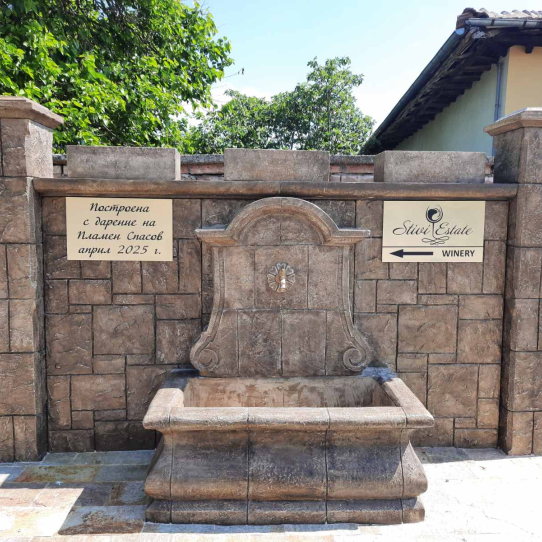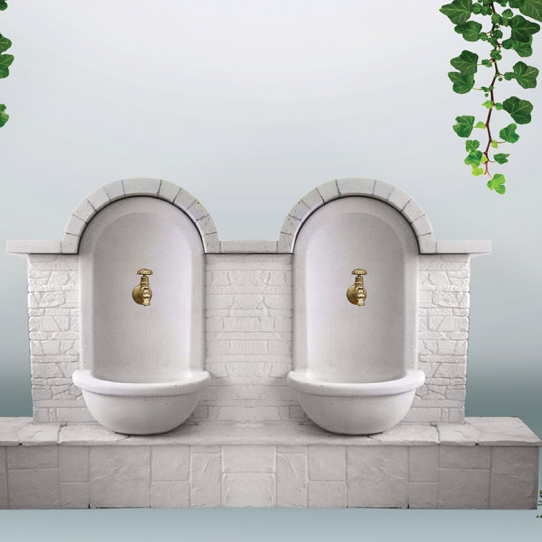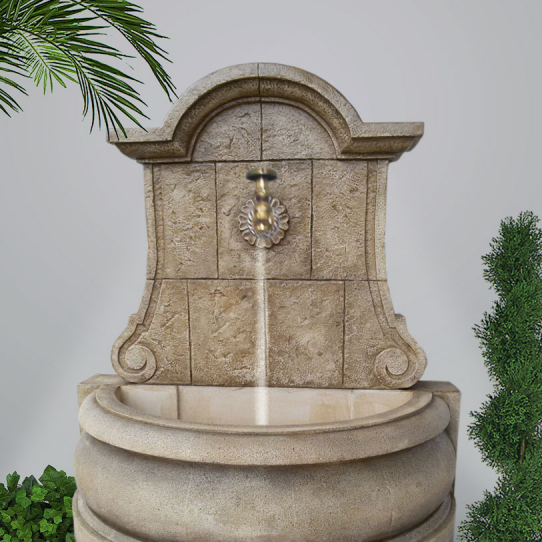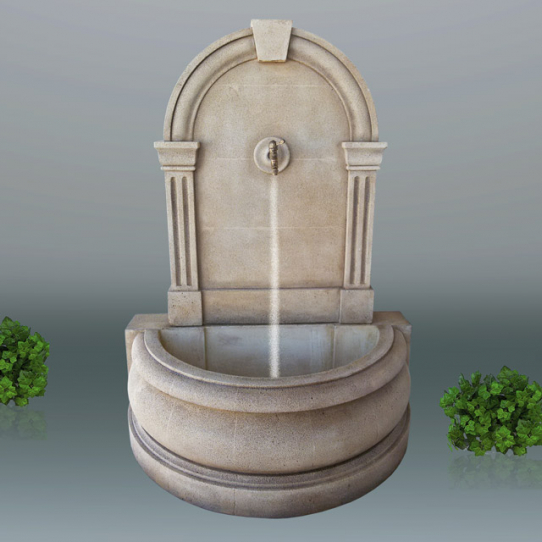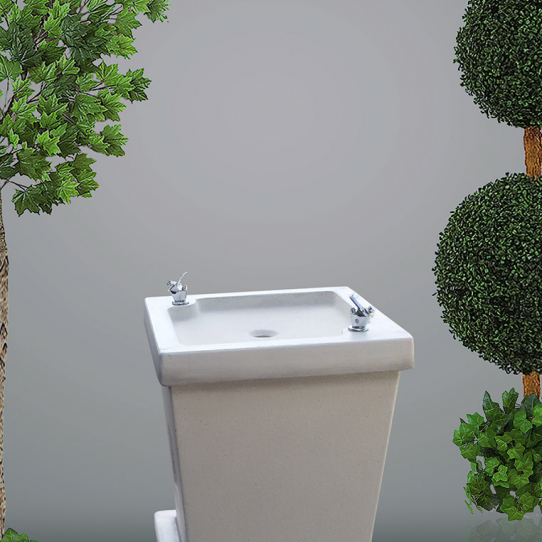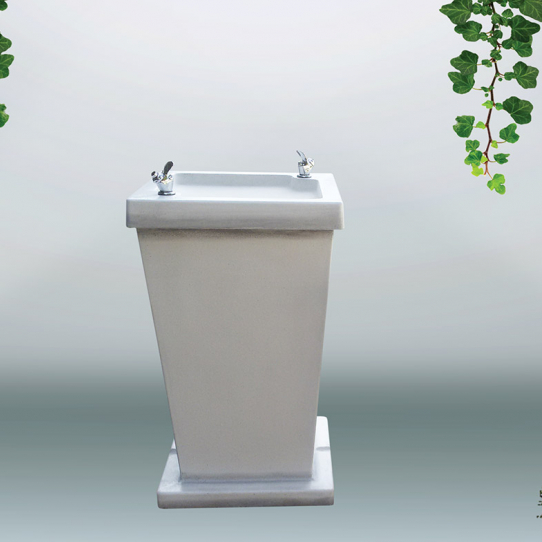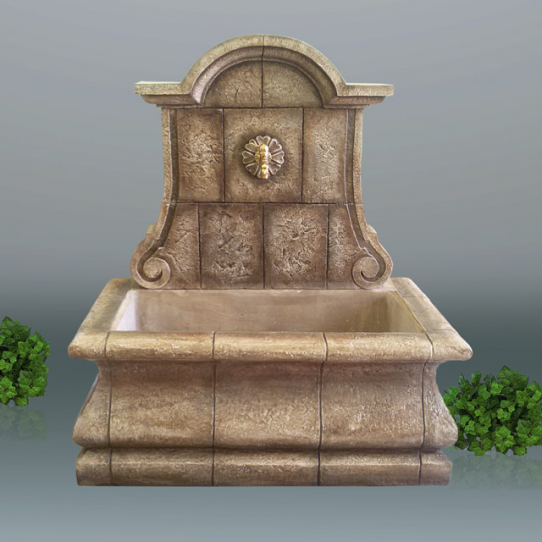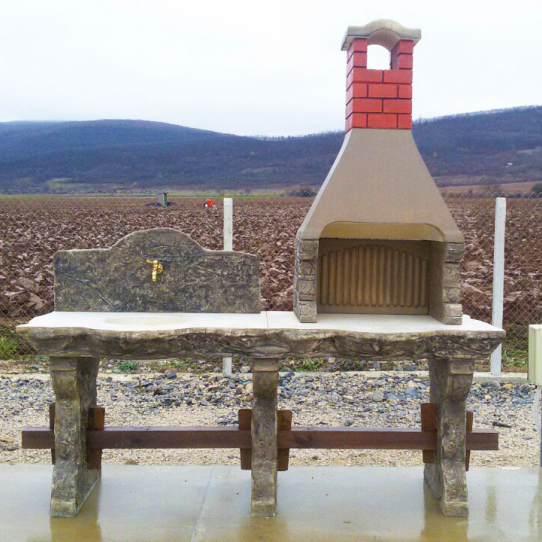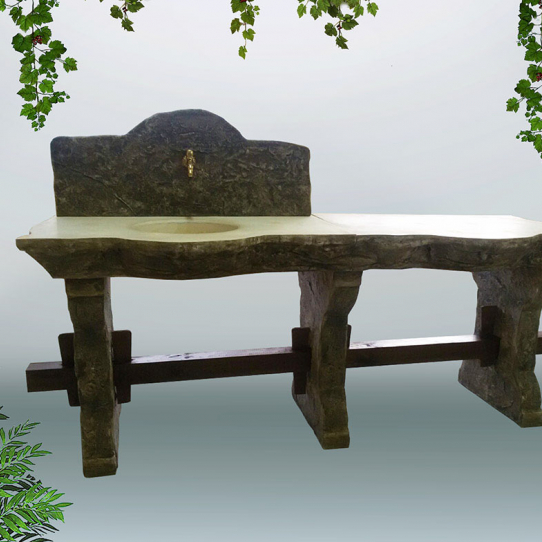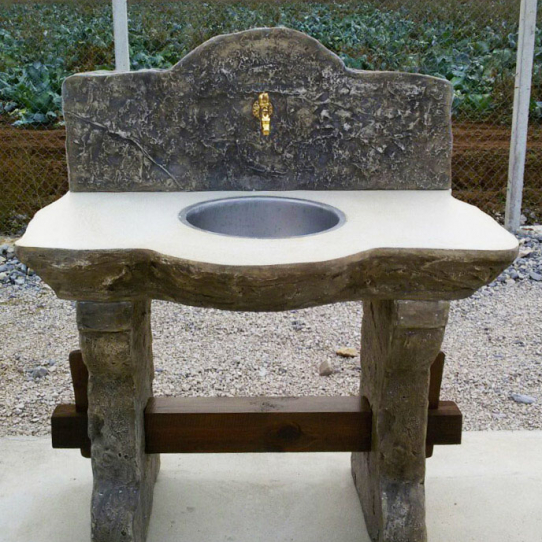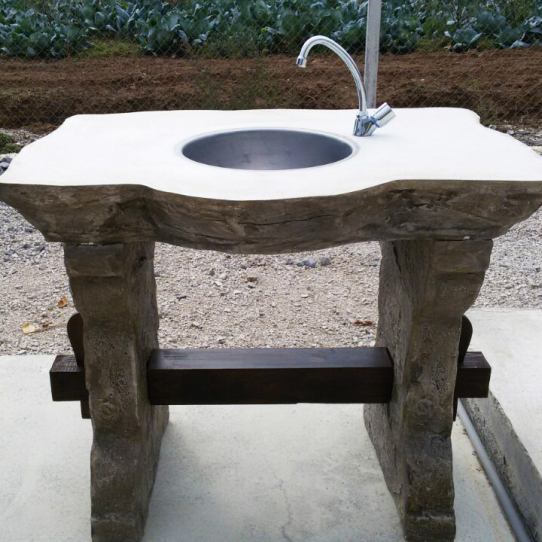Drinking Fountains
When we wash our hands at the tap, we hardly think about how long and difficult the path of the water to our homes was. Even if it sounds incredible, the water supply - as we know it today - began to be implemented in Bulgaria in the 1930s. And before that?
A little history about garden drinking fountains
Until the end of the 19th century, Bulgarians provided themselves with water for drinking and household needs from rivers and wells, some of which reached a depth of up to 30 meters. In order to purify the water produced in this way, our ancestors used special stones as a filter. Towards the end of the 19th century, in some larger settlements in our country, local Turkish magnates ordered the construction of water pipes, through which the living liquid was "brought closer" to the settlements. However, purposeful work on this issue began after the liberation from Turkish slavery, with the governments of the major cities in the country - Sofia, Ruse, Varna - being activated first. The first water supply project for the Bulgarian capital dates back to 1884 and was for a population of 40,000 people.
Active work on the water supply of the smaller settlements began in 1926, when a royal decree ordered its construction. And in the period 1931-1945, this process was especially intensified, and thus the water reached the villages of Bulgaria.
And without knowledge of this history, deep in his memory, every person has at least one memory from his childhood of a country house with a yard, in which he drank to his heart's content, straight from the spout of the garden fountain, cold and tasty water. And he has splashed until he is completely wet with friends from this same fountain, pressing the opening of its spout with his palm.
Already back in the years is the time when Bulgarians did not have running water in their homes, not even in their yards. And the women, with a mare and menzi, went to the village fountain for water. The provision of water for the household and personal economy in our more distant past was not only an urgent necessity, but also had another characteristic. The village fountain was also the place where young men and women met and exchanged words of love and fidelity. Thus, the former fountain acquired a romantic appearance, sealed in our folk songs and in poems and stories.
With the development of society and the improvement of life, water supply is gradually "closer" to man. First, the fountain "enters" the courtyard of the house, later also into the house itself. This naturally leads to a change not only in the type of faucets, but also in the material from which they are made. Garden fountains more than a hundred years ago were mostly made of natural stone and over time became covered with a natural patina and moss. Today, they are preserved only in some places and are on the way to disappear completely. Gradually, people replaced them with concrete ones, different in type and size, and even in color, depending on the layout of the yards.
Drinking fountains from the company "Briz 95" OOD - Sevlievo
The company "Briz 95" in Sevlievo produces more than 40 models of concrete fountains, which can be classified into three large groups - garden fountains, park fountains, wall fountains. Their name itself suggests their purpose.
Garden drinking fountains
The most numerous - about 30, are the models of garden fountains. They are designed for the yards of country houses, but they can easily be installed in the yards of city houses as well. They are distinguished by a stylish appearance - they are not cluttered, and the simple and clean design is consciously sought after. The classic structure of the garden fountain is a column and trough. The column not only hides the pipe through which the water comes, but also protects it from atmospheric conditions. Based on this structure, Breeze 95 has designed different types of columns and troughs that form the wide variety of garden fountains. Some have a smooth surface, others are grooved. A garden fountain is also available, which was developed by a sculptor on behalf of the company and resembles the old village fountains built of stone. In several models, there is a pot on the column, which makes it possible to plant flowers. Thus, in the warm seasons of the year, the garden fountain has not only a purely practical purpose, but also becomes a source of aesthetic delight.
In the case of garden fountains, their height range is not particularly large, given their purpose. The lowest is 115 cm high, and the highest - about 160 cm. However, their width varies and in some models exceeds a meter. Also interesting are garden fountains with two faces, respectively with two troughs, which require a larger area, but allow a drinking fountain to be installed on one side, and a tap for pouring, washing and watering on the other.
Park drinking fountains
Park fountains are intended to provide water to people in public places in populated areas. In this section, there are dozens of models, and the sizes - from small to large, because a small fountain installed in a corner of a city park, as well as a large fountain located in a large city square, is a park. Both satisfy the same need of people. In recent years, the Sevlev company has developed a new model of a park fountain - with a curved arc-shaped body. It can be used alone, as a single fountain, but it can also be combined in pairs, threes and fours. As a result, an interesting configuration is obtained, which is further broken up by the possibility of grouping arc-shaped bodies of different heights. And between them you can put pots in which to plant flowers.
Of particular note are the several park fountain models with four faucets or four troughs, which are suitable for large public spaces. Their height also suggests it - from two meters to two meters and 40 cm. Despite their large size, these fountains are beautiful and harmoniously fit into large public spaces - squares, markets, parks, urban gardens.
The Breeze 95 company is the only one in the country that has thought about people with disabilities. In the early spring of 2012, it offered its customers the specially designed fountain for the disabled, which falls under the category of park fountains. Its shape and dimensions are adapted to the difficulties experienced by people with disabilities in Bulgaria, even when satisfying such a natural need as drinking water from the tap on the street.
Wall taps
Another variant of garden fountains are wall fountains. Their characteristic is that they must be mounted on a wall or a sufficiently wide column. The main type is the Saint George fountain. Its name comes from the panel on the wall of the fountain, which depicts the saint on horseback with a spear thrust into a dragon. Later, panels with other images were developed, which were borrowed from Bulgarian folklore and offered customers variety. At the "St. George" fountain, in addition to the traditional laying of the trough - on the ground, a second option is offered - to raise the trough on a pedestal, which increases the height of the entire fountain.
Regardless of how far humanity goes in its development and what amenities are created in people's homes, the need for a garden fountain in the yard will not disappear. Nothing can replace its convenience and practicality when one wants to wash a fruit, rinse one's hands, drink water or water the flowers in the yard. Therefore, every year the company "Briz 95" strives to develop a new model of garden fountain, with which not only to increase their variety, but also to respond to the eternal desire of users for new and new forms of something as old and familiar as the garden fountain fountain.

